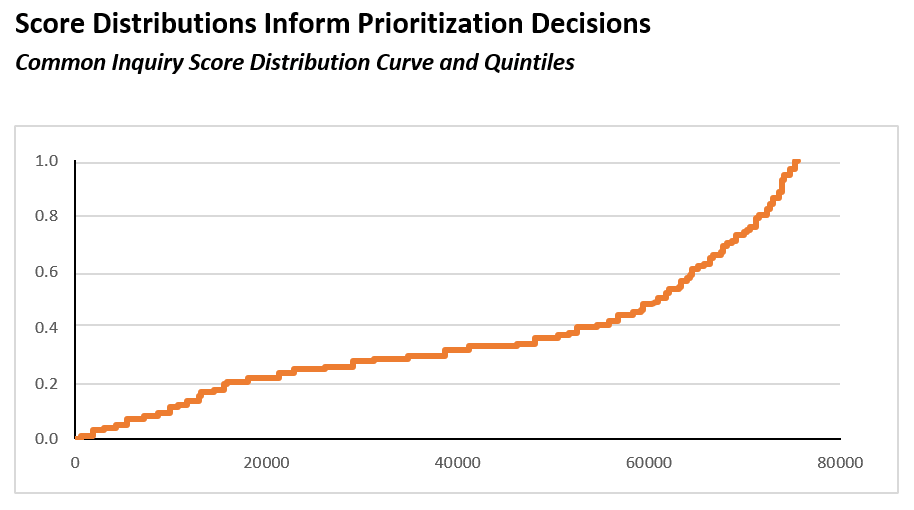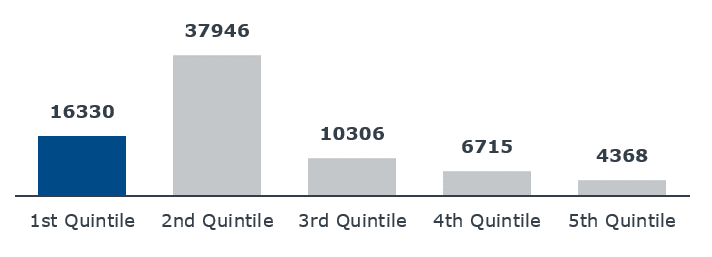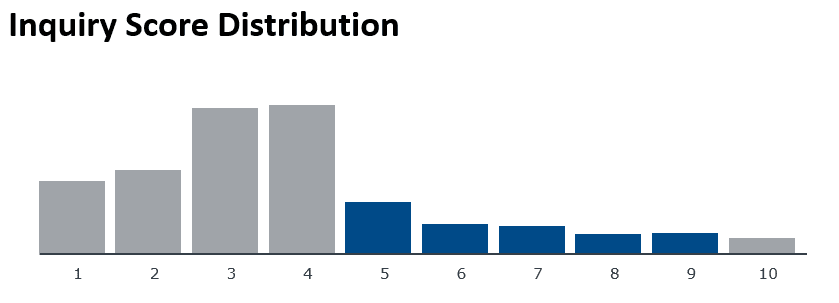Enrollment leaders have always made predictions about the future, using whatever tools they had at their disposal. Recent technological advances have made it possible to make better predictions with more sophisticated analytic tools. Read on to learn about two easy ways you can use analytics to prioritize the right students for certain communications.
Let’s first define some commonly used terms. As the graphic below illustrates, “analysis” is the limited process by which data are analyzed. “Analytics” refers to the entire process by which a decision is made using data, from data-gathering to implementing a decision.

The most common use of predictive analytics in student recruitment is to help enrollment leaders understand whether or not they are on-pace to hit goals. This involves putting all the data the university collects about prospective students into some sort of mathematical model and using the model to calculate the probability any given student will progress to the next phase of the recruitment funnel. These probabilities are then aggregated to assess whether the university is on- or off-pace to hit goals.
Universities can also use analytics to target communications or events at particular students within their inquiry pool.
Southern Methodist University uses probability scores to avoid sending high-cost publications to students unlikely to apply
Southern Methodist University has an inquiry pool of over 80,000 students and a number of high cost publications, so ensuring they don’t waste money sending the highest-cost publications to unlikely-to-apply students is a priority. Two charts below are illustrative.
In this first chart, students are arranged from left to right in terms of likelihood to enroll, which is the corresponding value on the Y-axis. On the left are students unlikely to enroll; on the right are students very likely to enroll.

In this second chart, we’ve shown the distribution of these students across quintiles. At this early stage, there aren’t that many students in the lowest quintile, and there are very few students in the high quintiles; most students are clustered in the second quintile.

Southern Methodist University uses tiers like this to identify a group of students to not receive its highest-cost publication, a glossy brochure costing about $8. By not proactively mailing this brochure to the roughly 16,000 students in the bottom quintile, SMU saves over $120,000 in print and mailing costs.
It’s important to note that these model scores are not static. A student may take certain actions (say, responding to an email) that move her from one quintile to the next. Thus, the student may later be sent the glossy brochure.
Texas Tech uses a predictive model to manage invites to a fall academic preview
Texas Tech University hosts a fall academic preview over a weekend in October. They know for this weekend that they can only accommodate about 2,000 students, and they know they have to invite 60,000 students to get those 2,000 attendees. Figuring out which 60,000 students to invite is the tricky part.
The first step in this process is to use model scores (here distributed by decile), to prioritize those students more likely to enroll. Students that fall in the fifth through ninth deciles are highest priority to receive invites to the academic preview.

Importantly, Texas Tech doesn’t use the model score alone to determine whom to invite. For them, that’s a starting point. They layer on other factors (like whether or not the student has submitted test scores) to find the students who would benefit most from a high-attention event like the fall preview.
These are just a couple of the ways universities are using predictive analytics to target high-cost recruitment resources to the students who will benefit most. Over the coming weeks, the Enrollment Management Forum will share a few additional creative ways universities are employing analytics to help with enrollment.


